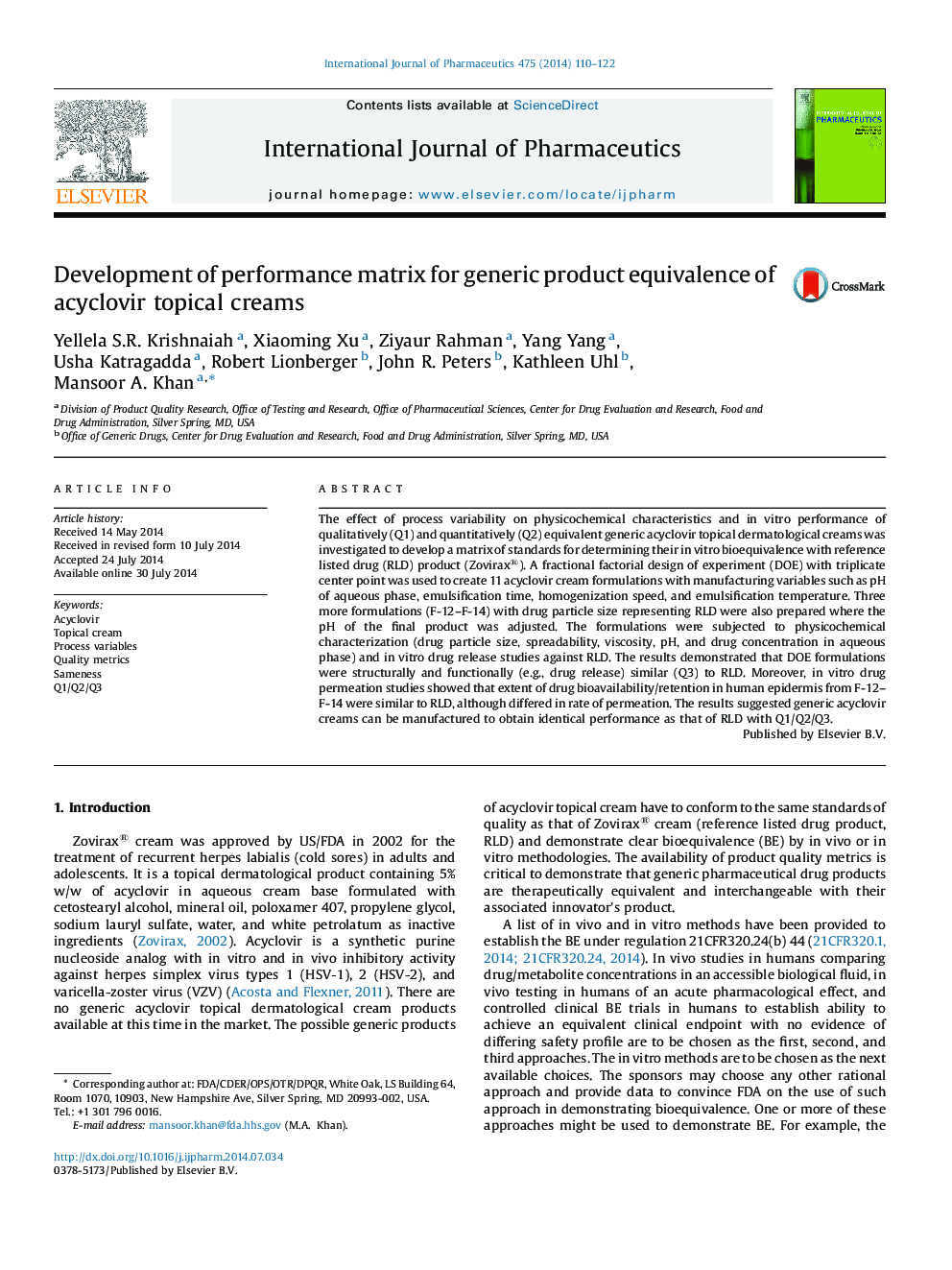| Article ID | Journal | Published Year | Pages | File Type |
|---|---|---|---|---|
| 2501633 | International Journal of Pharmaceutics | 2014 | 13 Pages |
The effect of process variability on physicochemical characteristics and in vitro performance of qualitatively (Q1) and quantitatively (Q2) equivalent generic acyclovir topical dermatological creams was investigated to develop a matrix of standards for determining their in vitro bioequivalence with reference listed drug (RLD) product (Zovirax®). A fractional factorial design of experiment (DOE) with triplicate center point was used to create 11 acyclovir cream formulations with manufacturing variables such as pH of aqueous phase, emulsification time, homogenization speed, and emulsification temperature. Three more formulations (F-12–F-14) with drug particle size representing RLD were also prepared where the pH of the final product was adjusted. The formulations were subjected to physicochemical characterization (drug particle size, spreadability, viscosity, pH, and drug concentration in aqueous phase) and in vitro drug release studies against RLD. The results demonstrated that DOE formulations were structurally and functionally (e.g., drug release) similar (Q3) to RLD. Moreover, in vitro drug permeation studies showed that extent of drug bioavailability/retention in human epidermis from F-12–F-14 were similar to RLD, although differed in rate of permeation. The results suggested generic acyclovir creams can be manufactured to obtain identical performance as that of RLD with Q1/Q2/Q3.
Graphical abstractFigure optionsDownload full-size imageDownload high-quality image (186 K)Download as PowerPoint slide
